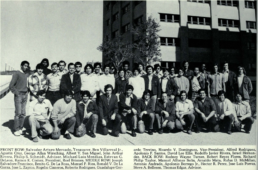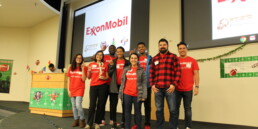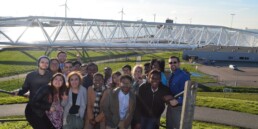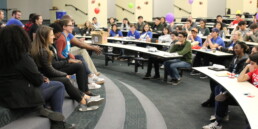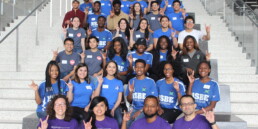During this time, Phil Schmidt, a professor in the College of Engineering, had recently visited a program at Prairie View A&M University, a historically Black college (HBCU). While there, he noted the diversity of the student body — diversity of thought, race, cultural background, gender and religion — and wanted to bring that diversity back to the UT Austin campus.
To help instill this change, Schmidt — along with the dean of the College of Engineering, Earnest Gloyna, fellow engineering professor Tom Edgar and a small committee — founded the Equal Opportunity in Engineering program (EOE) aimed at increasing the diversity of the engineering student body by supporting students who came from historically underrepresented populations. Schmidt soon became the program’s first director — a position he held proudly for six years — and helped to raise hundreds of thousands of dollars in minority scholarships and lay the groundwork for the program’s success.
Over the last 50 years — shaped through Supreme Court cases advocating for affirmative action and the consistent expansion and formation of engineering programs geared toward championing diversity — EOE has become what we know it as today: a thriving ecosystem within the Cockrell School that provides crucial support and educational initiatives to pre-college, undergraduate and graduate engineering students, empowering them to become leaders.
A Roadmap to Success
While EOE’s mission to provide students with equal and equitable opportunities has remained the same over the last five decades, its offerings and initiatives have greatly expanded to amplify student success. This has come both in and out of the classroom. From dedicated academic programs and partnerships with student groups to mentoring programs and initiatives that help ease the transition into college, EOE seeks to provide students with a home away from home
where they can feel safe and supported and where they can build lifelong friendships and career networks.
“I have a unique perspective and a deep dedication to EOE. Not only do I have the privilege of being the program’s current director, but I was involved in EOE when I was a student in the Cockrell School. I know what it’s like to search for a sense of belonging, and I know how pivotal a supportive community can be to success.”
—Enrique Dominguez (B.S. CE 2006), current EOE director
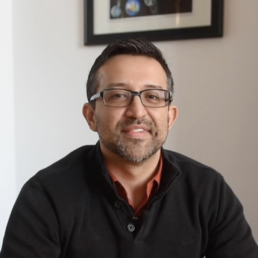
The positive impact of a supportive community is proven by the data. With the help of EOE and other university initiatives, diversity within the Cockrell School’s student population has risen from just 89 students (3.7% of the engineering student body) in 1973-1974 to 1,204 students, (over 20%) in 2019-2020. EOE hopes to continue this trajectory in the coming years through increased, focused programmatic offerings.
I see EOE’s goal as three-fold,
Dominguez shared. First, we want more underrepresented populations to learn about engineering and know it’s an option for them, regardless of their background. Second, we want those students to succeed both personally and academically. And finally, we want to launch them into opportunities where they will ultimately make an impact on society. It’s a grand vision but an important one.
Generations of Impact
Aside from the data, EOE measures its impact through the voices and feedback of the students participating in its offerings. And, after five decades, its impact is far-reaching. EOE alumni hold industry and leadership positions worldwide, attributing much of their success to the program’s resources and support at a time when they needed it most.

“EOE was the shining light in a college experience that felt hazy, dark and unfamiliar. They were the lifeline I didn’t know I had and they brought me a family I didn’t know I needed. Through EOE, I have been granted incomparable life experiences to grow as a leader, and I can’t wait to use what I’ve learned to impact the lives of future students.”
—recent graduate Dahlia Lopez (B.S. ME 2020)
Lopez’s sentiment is echoed by many.
I am honored to have been a very small part of EOE’s history,
said alumna Clara V, formerly the South Central Regional Recruiter for the CIA. I will continue to recommend EOE as an unparalleled program that will make a lasting and profound impact on anyone who invests their time to participate in the program’s activities.
Looking Ahead While Reflecting Back
 Building on the successes of the last 50 years, EOE has big plans for the next 50 years, starting with a focused attention on three main goals: exposing pre-college students to engineering, enhancing current students’ experiences and providing leadership opportunities for personal and professional growth.
Building on the successes of the last 50 years, EOE has big plans for the next 50 years, starting with a focused attention on three main goals: exposing pre-college students to engineering, enhancing current students’ experiences and providing leadership opportunities for personal and professional growth.
As part of exposing pre-college students to engineering, EOE hopes to further develop their existing outreach programs that bring representatives to high schools throughout the state to meet with underrepresented communities and provide opportunities to explore engineering through hands-on challenges, presentations and student panels. For current students, they will expand their Engineers Exuding Excellence (E3) Living Learning Community’s size and offerings, currently giving 26 engineering men of color the opportunity to live in a community geared toward developing their academics, professionalism and self-efficacy. And they will continue to increase their leadership-development efforts through targeted growth of their Global Leaders Week, an intensive weeklong abroad experience where students visit local companies, city centers and universities to learn more about regional engineering challenges.
And as they look ahead to this bright future, EOE community members are preparing to celebrate their 50the anniversary, commemorating their successes through monthly impact newsletters, a 50 for Fifty
fundraising campaign, in-person community events in fall 2021 and a celebration gala to culminate the year.
The successes and progress of the next five decades will be determined by our actions today. Gloyna, Schmidt and Edgar had the foresight to instill long-lasting change and advance opportunities for all engineers, and it is our responsibility to continue this legacy.
As we find our country in new waves of civil unrest not experienced since the 1960s, EOE’s call to provide opportunities for underrepresented groups is more important than ever. Although history may be repeating itself, EOE’s original mission remains unchanged: to provide opportunity for Texas Engineering students, equipping them with the tools, community and resources they need to change the world.
